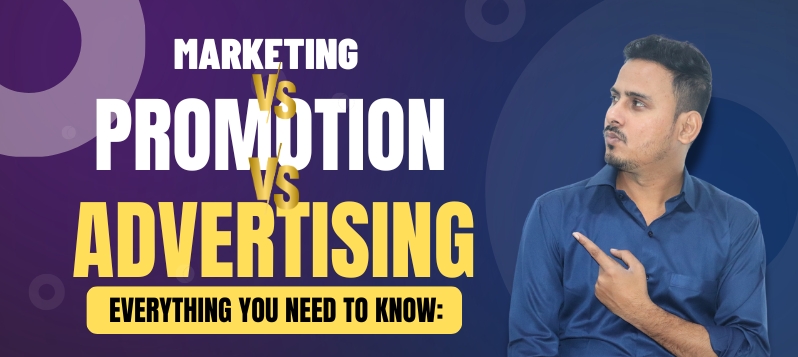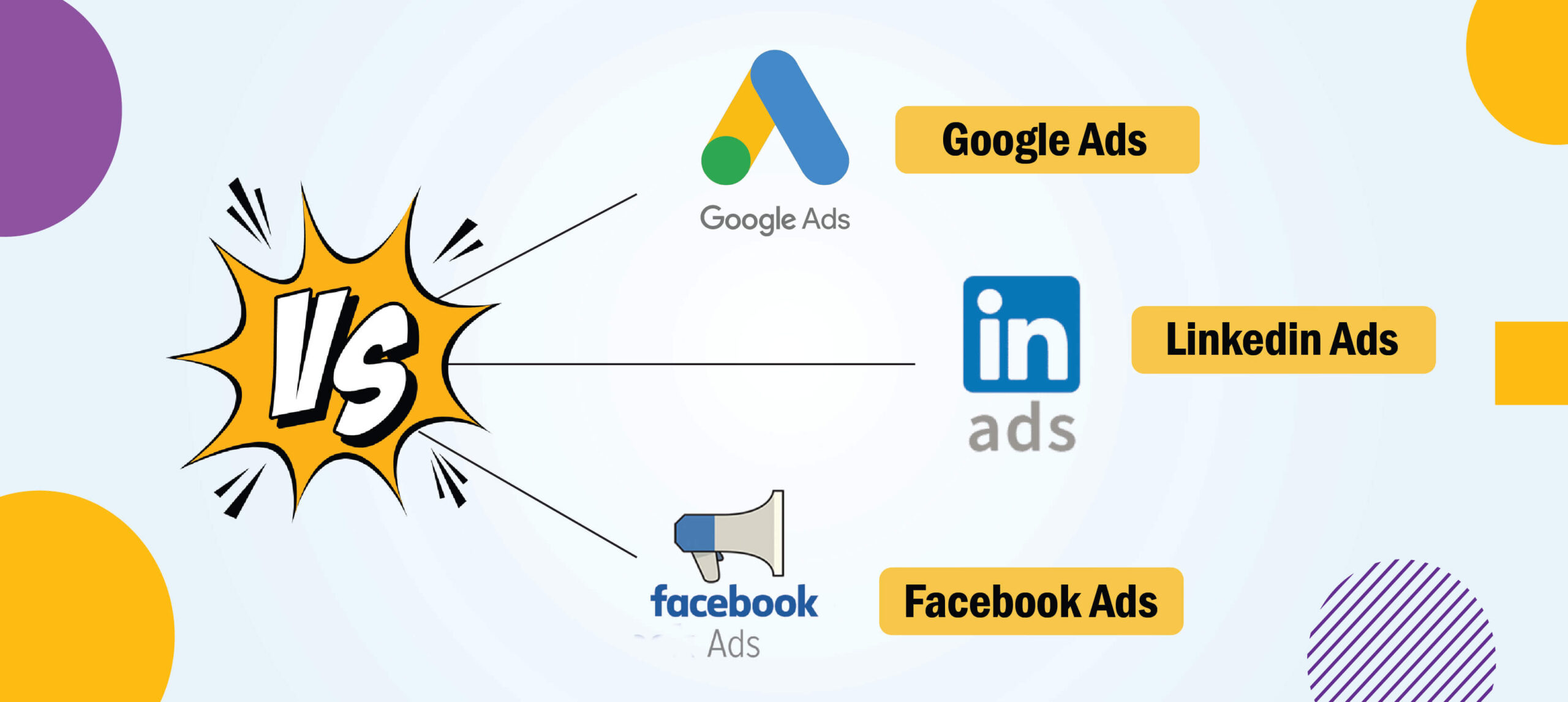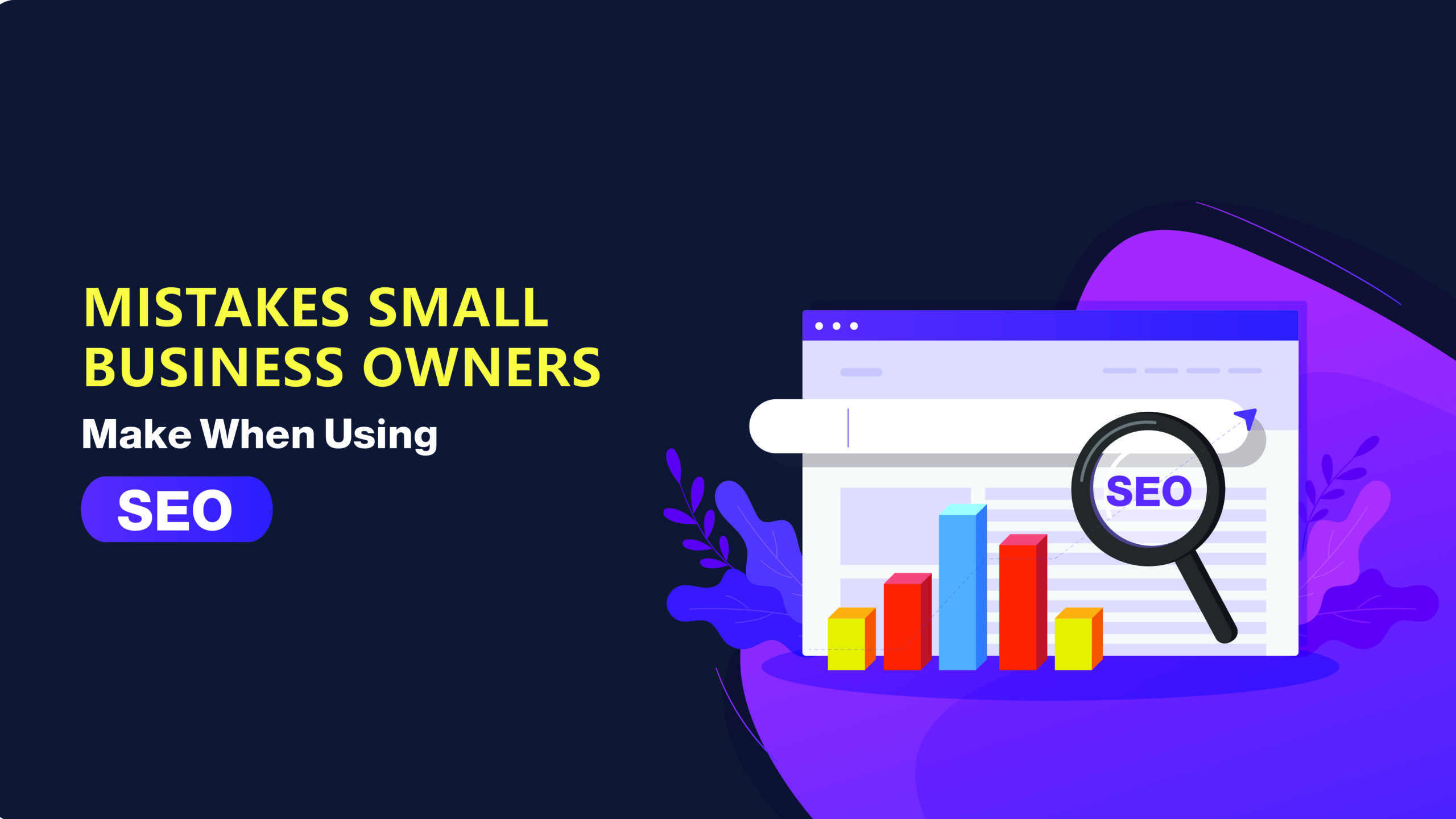Introduction
Did you ever think about certain terms like marketing, promotion and advertising being frequently used in the companies alternately? What is the difference between marketing promotion and advertising?
Marketing refers to a complete strategy that includes the market research, product development, pricing strategies, distribution channels, branding, to advertising and promotion, aimed at ensuring that consumers acknowledge its value.
Advertising and promotions are only specific strategies in the overall marketing process while they do not control the overall marketing in general.
Promotion as part of the marketing mix (4Ps) refers to the communication tool used to inform the merits of a product, service, or brand inorder to create awareness, generate interest and drive sales.
Advertising, sales promotion, public relations, personal selling, and direct marketing are the main types of promotion in marketing.
Advertising is a paid way of promotion in order to receive viewership towards a product or service gaining interest,engagement and sales. It can be broadly categorized into traditional or digital channels.
Online search advertising, Social media advertising, Print, Direct mail,
Broadcast, video and TV advertising, Cell phone mobile advertising are the main types of advertising in marketing.
Companies usually use the terms like “marketing”, “advertising”, and “promotions” interchangeably while attempting to engage with their audience or attempting to gain long-term or short-term success.
To form good strategies, one needs to grasp the various distinctions between marketing, promotion, and advertising, which assist in enhancing brand familiarity, enhancing sales and building relationships with customers.
Should you specialize in marketing, promotion, or advertising? This article attempts to respond to this and explain various other things on how marketing, promotion, and advertising are different from one another. Starting first, let us explore the inherent nature of marketing.
Also Read: Google Ads vs Tik-Tok Ads
Marketing vs Advertising
Now, let us compare Marketing and advertising.
Marketing is to realize the market situation, recognize customers’ needs and develop a product whereas advertising is a marketing process activity performed with an intention to drive the behavior of the customers.
Marketing scope consists of Market research, promotion, advertisement, distribution, sales, customer satisfaction whereas Advertising scope consists of Newspaper, TV, radio, magazine, digital platform, hoardings, etc.
Marketing is a long-term process aimed at generating sales, whereas advertising is a short-term activity focused on raising awareness among target audiences.
Also Read: Google Ads for Concrete Coatings
Advertising vs Promotion
Advertising is a part of promotion that aims to persuade potential customers to purchase or consume more of a particular brand of product or service.
Promotion , as a part of the marketing mix , involves informational and persuasive activities that increase the demand for a product or service, as well as direct inducements that offer added value or incentives to buy.
The primary goal of advertising is to build long-term demand for the product or service and increase brand recognition
The primary goal of promotion is to increase short-term demand and encourage immediate purchases by offering incentives such as discounts or special offers.
Advertising is long term and continuous and promotion is short term and for a specific period. Advertising focuses on building brand image whereas promotion focuses on immediate conversions.
Also Read: Tik-Tok Ads Vs Facebook Ads
Define Marketing?
Marketing is a process that takes years of study to learn about the consumer’s needs and wants.
It consists of creating a product or service, selling it to target markets, and making it available to those ready to purchase it and thereby resulting in lead generation.
Marketing Mix(4Ps):
Product, Price, Place, and Promotion are the important elements of marketing also referred to as the 4Ps or four pillars of marketing.
The very first step in marketing is to seriously develop a product or a service, that involves enormous market research, and then finding out the target markets, and in-depth research about the competitors, and lastly collecting sufficient information on the unique advantages that your product or service is providing to the market.
After the product is completely developed, the next thing to do is to establish a pricing strategy.
This is determined by several factors, such as selecting a low-price strategy to attain sales that focus on volume or to get a premium price to enhance profit margins.
The “Place” aspect addresses the distribution channels through which your product will be sold, whether via online platforms, physical stores, wholesalers, retailers, direct mail, or direct-response selling.
Once the initial three Ps have been established, the focus shifts to developing marketing communications, marking the fourth and final phase in the process of introducing your product or service known as promotion.
AI in marketing uses machine learning, data analysis to gain more informative data insights, and automate marketing tasks eventually improving efficiency.
Digital marketing strategies are equally significant in contemporary marketing as it can help companies connect with target audiences more effectively and efficiently, track campaign success in real time, and establish strong customer relationships.
It facilitates customized messaging, cost-efficient advertising, and worldwide reach beyond the limitations of conventional marketing practices.
Grasping the concepts of marketing strategy and marketing plans is essential for attaining business success, as they establish a structure for aligning marketing initiatives with overarching business objectives, enhancing resource distribution, and facilitating effective communication with target audiences.
Also Read: Best Programmatic Advertising Platforms
What is a marketing strategy?
A marketing strategy serves as the comprehensive framework that outlines how a business intends to connect with its target audience and fulfill its objectives.
A marketing plan is a comprehensive and practical document that delineates the implementation of the strategy and marketing mix, encompassing specific marketing campaigns, timelines, and budget allocations.
A frequent problem stems from the mistaken impression by some people who incorrectly identify “marketing” with the fourth P—Promotion alone. This misconception can lead to confusion, particularly for business owners.
Sujit Shukla States that it is always necessary to establish a full understanding between your marketing team so they comprehend the entire scope of the marketing mix, including the importance of the first three Ps, prior to building marketing communications campaigns. Such a holistic method not only clearly explains but also forms a base for more strategic and effective marketing methods for various channels.
Also Read: Targeting Small Business Owners on Facebook
Marketing Channels
Marketing distribution channels are the various media of channels through which the marketing strategies operate in engaging, promoting and communicating to the appropriate audiences. The channels play an important role in disseminating marketing messages and customer acquisition where each channel has its unique advantages depending on the target audience and the campaign type.
There are two types of marketing channels: online and offline. Online marketing channels use the internet, such as social media, email, and websites.
Offline marketing channels focusses on face-to-face interactions, including print advertisements, billboards, and in-store promotions.
In order to enhance the effectiveness, most companies adopt an omnichannel marketing approach where seamless integration of these various channels is done to provide a unified and consistent experience to customers.
Some of the major marketing channels are listed below:
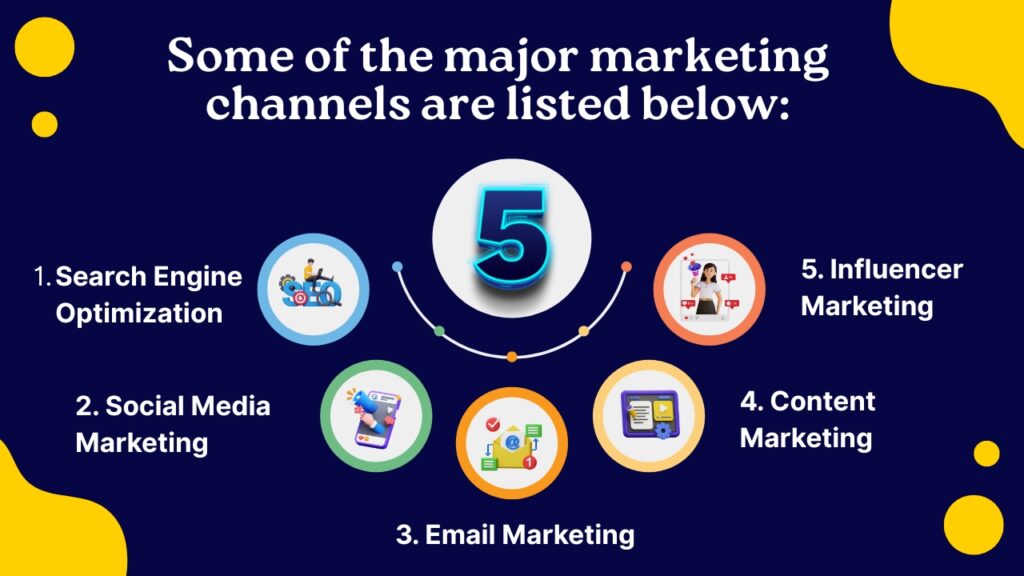
1. Search Engine Optimization (SEO):
SEO refers to the process of optimizing site content in order to enhance search engine rank on search engines such as Google.
The three primary forms of SEO are On-page SEO (optimizing website structure and content), Off-page SEO (establishing external credibility by means of backlinks and social signals), and Technical SEO (optimizing website’s technicalities).
On-page SEO aspects such as keywords, meta tags and link building in order to grow organic traffic for companies.
Off-page SEO is anything you do outside of your website to try to improve its search engine rankings. Important Off-page SEO methods involve creating backlinks, using social media, and gaining brand mentions.
A properly implemented SEO campaign will have a site featured when customers search for relevant products, services, or information, with relevant keywords which means long-term impacts through gaining visibility and credibility over a period of time.
Also Read: Mistakes Small Business Owners Make When Using SEO
2. Social Media Marketing:
Social media marketing platforms like Facebook, Instagram, and Linkedin support interactive spaces upon which to engage with their users.
Organic messaging, sponsored messaging, and influencer sponsorships allow for brands to engage in dialogue directly with the public, respond to questions from consumers, and promote awareness of brands.
Social media facilitate the potential to highlight creativity and targeted campaigns and thus form a powerful tool through which to address multitudes of heterogeneous publics.
Content marketing, advertising, influencer marketing, social media management, and user-generated content are types of social media marketing.
Benefits of social media marketing includes improved brand recognition, enhanced customer interaction, economical advertising solutions, and the capacity to foster robust brand loyalty while boosting website traffic.
Also Read: Why Hire a Social Media Agency
3. Email Marketing:
This channel remains one of the best methods of direct customer contact. By distributing targeted emails to a segmented list of subscribers, companies can sell products, promote events, or promote valuable content.
Email marketing campaigns can be automated and provide real-time and relevant messaging, whether for lead generation, promotional offers, or loyalty.
Find the top free email marketing software that will assist businesses of every size in creating, managing, and automating email campaigns without emptying your wallet.
Email marketing tools for bloggers include Mailchimp Free, Brevo (formerly Sendinblue), MailerLite, and Benchmark Email to identify the best choice for your brand’s mission and audience size.
Also Read: How Often You Evaluate Your Paid Media Budget
4. Content Marketing:
Content marketing is about creating valuable, informative, and provocative content that will engage and draw in a target audience. It could be blogs, videos, podcasts, eBooks, etc.
The purpose is to provide valuable information that indicates the consumer problem or interests of the audience, this establishes brand authority and builds long-term relationships.
Types of content marketing includes – written, audio, video, and image.
Benefits of content marketing include enhanced SEO, greater brand visibility, strengthened customer relationships, and include client conversion rates.
Also Read: Facebook Ads Active But Not Spending Trouble Shooting Guide
5. Influencer Marketing:
Influencer collaboration allows businesses to leverage the credibility and audience of reputable influencers within the business’s area of operation.
Influencer marketing platforms are software solutions that facilitate the connection between brands and influencers, enhance the management of campaigns, and evaluate outcomes.
Influencers, having some credibility with their own audience, are able to generate visibility for a brand and enable products to receive promotion in their true form.
From social media updates to blogging, or videos, influencer marketing is one effective means of generating awareness as well as influencing buying behavior.
Benefits of influencer marketing includes heightened brand recognition, strengthened trustworthiness, and elevated audience interaction.
What is Advertising?
The Definition of Advertising
Well as Sujit Shukla Emphasis advertising, simply stated, is a spending of money to make your sales message heard. When you advertise, you are essentially purchasing space or time for advertisements, allowing you to decide what is in your messages, where they will show up, and how you will spend your money.
The power of an effective advertisement is that it can illuminate a problem or opportunity to potential buyers, present a general solution to their needs, and describe why your service or product is the optimal choice.
Most of the advertising space in today’s time has shifted into the digital realm. Therefore, the advertisers must be adept at crafting good sales messages and also knowledgeable about the usage of various tools.
Advertisers need to understand the basics of digital media, social media, and programmatic advertising so that their messages will be optimized across various devices such as the mobile phone, the tablet, laptop and also other media.
The digital age requires a multifaceted skill set, and advertisers need to be modified according to the continuously changing universe of online spaces. Creating great content is only one part of it; understanding the nuance of social media algorithms, how programmatic advertising works, and scaling content for different devices are just as crucial.
Mobile, tablet, laptop, and smart TV optimization add a new layer, which makes advertisers need to be agile and adaptable.
Today’s contemporary era has seen advertising success no longer solely dependent on the effectiveness of the message to attract but also on how well the advertisers master the available tools and platforms in order to hit efficiently across the multifaceted range of digital platforms.
Benefits of advertising include boosted sales, expanded customer outreach, improved brand visibility, and the capacity to remain competitive.
Types of Advertising

Just as marketing splits into multiple categories, so does advertising branch out into numerous types. Each category has its own set of advantages suited to a particular audience and objective.
1. Digital Ads (PPC, Display, and Video)
These are not just ads — they’re your digital warriors battling for eyeballs in a sea of distraction.
•PPC (pay-per-click): Think Google. Even smaller brands, like local restaurants, use PPC to get the top spot on search results, ensuring that hungry locals see them first. The perk? You’re paying only for genuine interest.
•Display ads: Enhance brand awareness through visually captivating graphics on third-party sites. Remember seeing a Nike shoe ad while reading an article? That display works its magic, bolstering brand presence every scroll of the way.
•Video ads: Engage people with great storytelling, usually leading to greater retention and conversion rates. Apple doesn’t merely advertise — they tell stories. Video enables great storytelling, leaving a memory in people’s minds.
Also Read: Facebook Ads Headlines Vs Description
2. Native Advertising:
Native Advertising is compensated advertising in which the advertisements possess the same look, feel and functionality as the medium on which it shows. The form of the advertisement is marked as “sponsored”. For example, sponsored articles on a news portal or a sponsored video on social media.
These ads blend naturally with the content to avoid obvious promotional wording and the outcome is increased trust and increased customer engagement.
Take the example of Buzzfeed teaming up with Tasty. A post “10 healthy dinner recipes” quietly brings attention to a new seasoning. This is stealth advertising—blended seamlessly but still effective. The plus point? Readers enjoy the material without having to necessarily buy.
Also Read: Google Shopping Ads Vs Search Ads
3. Social Media Ads:
Social media marketing is paid promotion displayed on social networking sites like Facebook, Instagram, LinkedIn, X (formerly known as Twitter), and so forth, whereby companies intend to promote specific audiences in order to advertise their services or products.
The final intention of social media advertising for companies is selling products or services, promoting brand recognition, driving web traffic and thereby raising sales further.
They can be tailored according to audience demographics, such as age, location, and interests. With Facebook and Instagram, you can target your audience exactly by age, location, and even interests.
Such targeting is impressive and effective. Customize, test, refine, and succeed. Advertising is an important part of the marketing story. When used together, these tactics form a harmonious tale of brand success. Various methods, when coordinated, can successfully drive brand awareness, visibility, and interaction.
Also Read: Best Social Media Platforms for Restaurants
What is Promotions?
Promotion is a form of communication between the seller and the buyer. The seller attempts to convince the buyer to buy their products or services using promotions. It aids in making the individuals familiar with a product, service or an organization.
It also aids in enhancing the public image of an organization. This form of marketing can also generate interest in the minds of buyers and can also create loyal customers.
It is one of the fundamentals of the market mix, consisting of the four P’s: price, product, promotion, and place. It is also one of the components of the promotional mix or promotional plan.
These are personal selling, advertising, sales promotion, direct marketing publicity and also event marketing, exhibitions, and trade shows. Promotion is defined as concentrated activities by the companies for direct communication with customers.
These activities range across a wide variety of activities including sales promotions, product demonstrations, contests, events, sponsorships, trade show displays, and distributing free samples, all activities within an overall promotions strategy.
In organizational setups, promotion management can be quite different. Some companies consolidate all promotion activity in a dedicated promotions department, while others might have an integrated marketing department with varied functions.
Large corporations might have separate departments for sales, marketing, advertising, and public relations, each of them further split into its own.
Promotions might be under public relations, sales might be under marketing, and social media might be under advertising. It is critical to differentiate between promotions and marketing, even with some semantic overlap, particularly in a diverse, multi-generational work environment.
A common understanding of marketing terminology encourages alignment and consistency across teams, which maximizes collaboration and coordination. Clarity is especially critical during prolonged planning, as it ensures all necessary actions are covered in a consistent manner.
Consumer promotion is marketing efforts aimed at encouraging immediate buying behavior and fostering consumer involvement. Consumer promotion examples include discounts, coupons, contests, free samples, buy-one-get-one free, and loyalty programs.
Types of Promotion
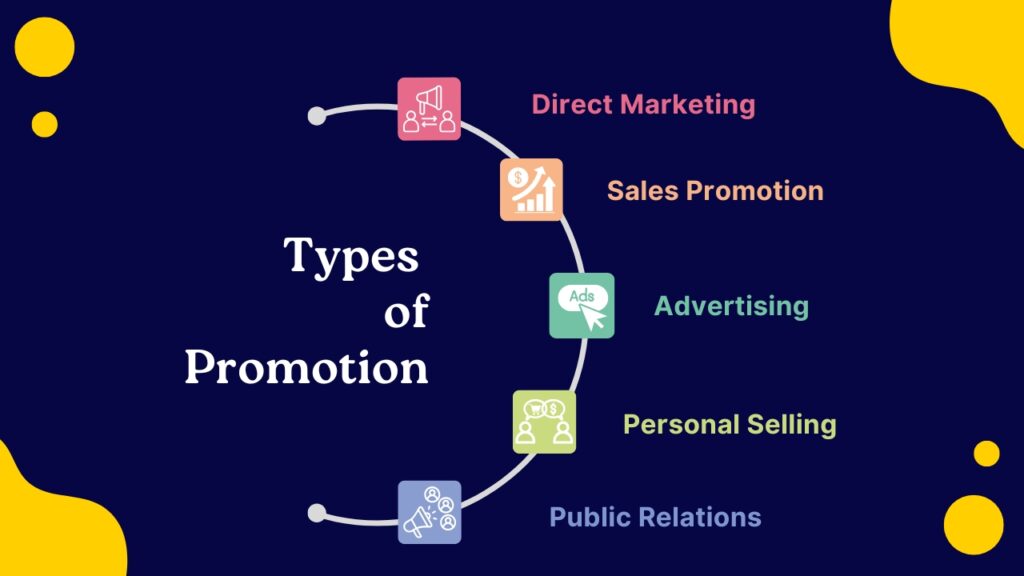
1. Direct Marketing:
It is a way of advertising which involves organizations sending messages to customers directly over an array of media like cell phone text, e-mail, web sites, internet ads, database marketing, leaflets, catalogue mailing, mail of promotion and addressed TV, newspaper, and magazine marketing together with outdoor media. It is also called direct response by the practitioners.
2. Sales Promotion:
The primary objective of sales promotion is to encourage purchases and boost sales. Apart from pushing sales volumes, it also helps to inform potential customers about new products and to regain lost customers. Product samples and coupons are instances.
The importance of sales promotion includes spreading information about the brand to customers in the market and in stabilising sales volume required to increase short-term sales of the products or services.
3. Advertising:
Advertising is indeed a promotional activity. It assists in the development of a brand and decides the brand name’s image in the market. Moreover, advertising allows for extensive spread of the message to customers.
4. Personal Selling:
The product sale is dependent on product sale. Personal Selling is a process whereby the companies send their agents to the customer personally selling the products. Here, they get the feedback immediately and they also develop a trust with the customer which is the most important factor.
5. Public Relations:
Managing the flow of information between the public and a company isn’t an easy task. However, a well-organized public relations department can establish a positive reputation for the company and restore its image when it’s in crisis. Try to engage them with your Customer Support team and help them to solve their problem.
What is the difference between marketing promotion and advertising?
The Differences Between Marketing and Advertising and Promotions
On the face of it, the words “advertising” and “marketing” and “promotion” seem to be synonyms; however, they are essentially distinct on a number of important dimensions. Let’s dig deep into these differences:
1. Scope and Purpose:
- Marketing: This is the broad method of discovering a target market and offering value to that market. Marketing is about developing relationships over the long term and entails several different elements like market research, branding, and customer service.
- Advertising: Also Known as PPC is a marketing area that is concerned with attracting attention and convincing potential customers to buy. It involves the explicit soliciting of a product or service to a given public.
- Promotion: Promotion is employed in order to generate awareness, create interest, and encourage action (employee or sales growth). Its scope encompasses various tactics, while its aim is to achieve specific business objectives like building brand loyalty, sales growth, or employee motivation and encouragement.
2. Duration and Continuity:
- Marketing: An ongoing, long-term process which develops and adjusts as a consequence of change in the audience, market, or brand.
- Advertising: This is a short-term activity with campaigns programmed to have launch and close dates.
- Promotions: Promotions can be defined as short-term, weekend, or long-term, such as a loyalty scheme.
3. Mediums and Platforms:
- Marketing: This involves a wider range of platforms, including online marketing, social media, content creation, customer service, and public relations.
- Advertising: This typically utilizes concrete paid media such as Google Adwords and social media promotion.
- Promotion: The range of channels employed for the dissemination of marketing messages. They include conventional ones such as print and broadcast media, and digital ones such as social media, email, and internet ads.
4. Measurement and Goals:
- Marketing: The key performance indicators can be customer satisfaction, brand awareness, or general level of engagement.
- Advertising: This generally emphasizes direct measures such as click-through, conversion rate, or ad recall. By knowing what these differences are, you’ll be better positioned to utilize marketing and advertising in the best manner for maximum gains.
- Promotions: Promotions are intended to inform, convince, remind, and involve buyers, while appraisals judge the success of these efforts with measures like numbers of sales made, conversion rate, and customers’ satisfaction rates.
Conclusion:
Marketing, promotion, and advertisement are interlinked terms, with each serving special functions in a business strategy.
Marketing is the general strategy that encompasses research, branding, pricing, distribution, and customer interaction.
Promotion is a component of marketing that aims to raise awareness and influence customer behavior through different means.
Advertising is a paid promotional activity that employs media channels to reach the target audience.
In short, marketing is the entire framework, promotion is an instrument used within that framework, and advertising is one kind of promotion.
Great businesses successfully merge all three elements into getting and keeping their customers! If you still have some confusion about marketing, promotions, and advertising, then do not hesitate to contact us at Sujit Shukla expertise and we would be glad to assist you.

